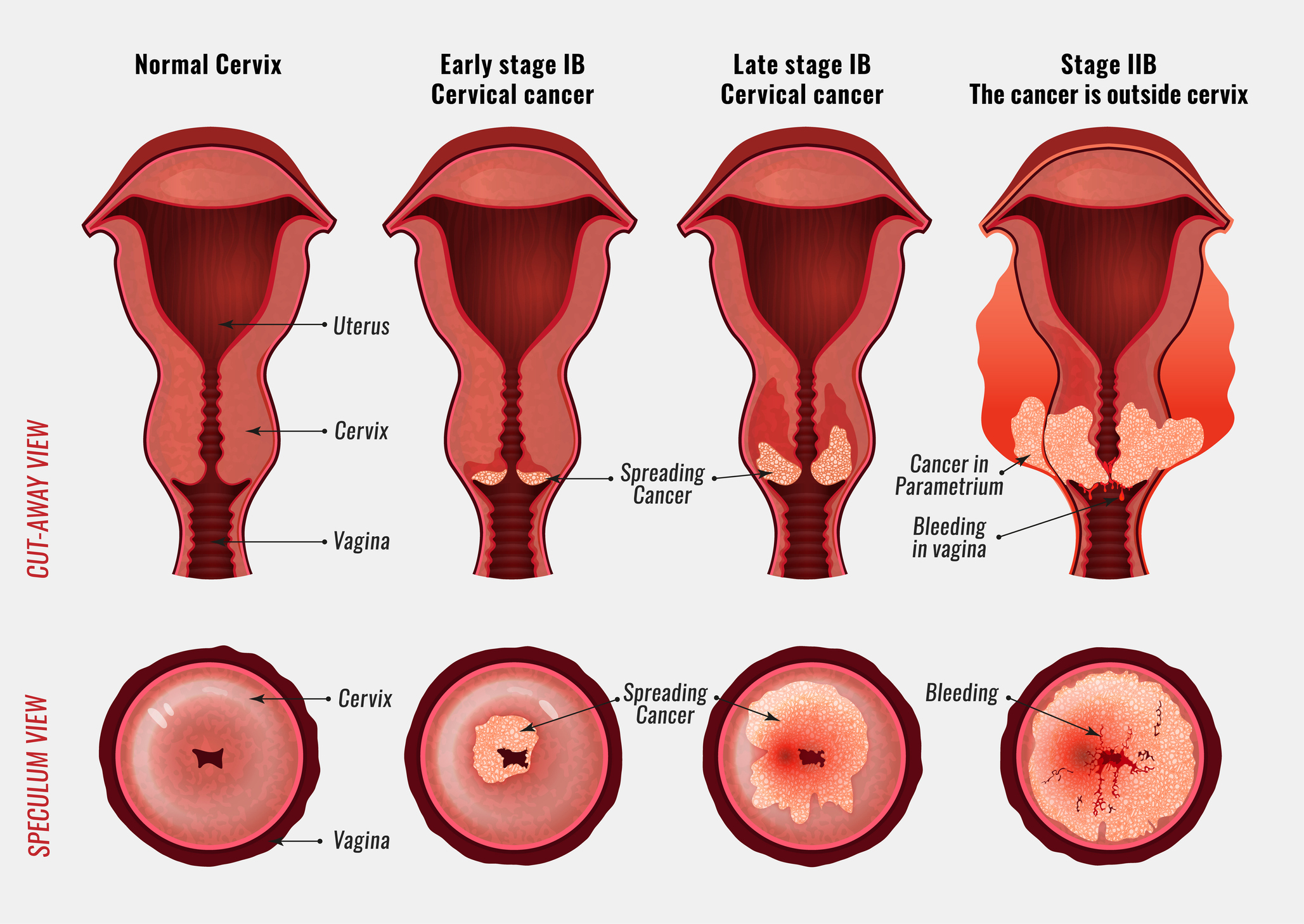Cervical cancer is a type of cancer that starts in the cervix. The cervix is the lower part of the uterus that opens into the vagina. Cervical cancer is usually a slow-growing cancer. It can often be found early and sometimes even before it causes symptoms.
Cervical cancer is usually a slow-growing disease, often found early and sometimes even before it causes symptoms. The HPV vaccine is an excellent way to prevent the disease, as it can help prevent the cervix from developing cancer. HPV can be passed on from person to person during sexual contact. However, there are many other ways that the virus is spread. Touching an infected surface or object and touching your mouth, nose, or eyes is a common way to spread the virus. It is also spread through shared clothing and towels, sexual and skin-to-skin contact, and from mother to child during pregnancy or birth.

Are There Support Groups and Counseling for Cervical Cancer?
Many support groups and counseling services are available for women with cervical cancer. These services can provide emotional support and practical advice for dealing with the disease. Many women choose to be screened for cervical cancer by having a Pap test. The Pap test looks for abnormal cells that could become cancer. It does not cause cancer, but finding abnormal cells allows healthcare providers to catch cervical cancer early when treatment is more likely to be successful.
Women should have a Pap test every two years starting at age 21. Women should also have a routine pelvic exam beginning at age 25 or after they turn 21 if they do not have the vaccine
The HPV vaccine as a cervical cancer prevention tool
The HPV vaccine is a cervical cancer prevention tool that both men and women can use. It is most effective when given to individuals before they become sexually active. What are the risk factors for HPV?
HPV is most often transmitted through sexual contact. The types of HPV that cause cancers and other HPV-related diseases can be spread through sexual contact.
Clinical trials for cervical cancer patients
Cervical cancer is a type of cancer that affects the cervix, which is the lower part of the uterus. The most common type of cervical cancer is squamous cell carcinoma, which begins in the thin, flat cells lining the cervix. Adenocarcinoma, which starts in the epithelial cells, is the second most common type of cervical cancer. Clinical trials are research studies that test new treatments or new ways of using existing treatments.
Cervical cancer mortality rates
Cervical cancer mortality rates have declined dramatically in the United States over the past few decades. In 1975, the mortality rate was 8.0 per 100,000 women. By 1992, it had dropped to 4.4 per 100,000 women. The decline was most pronounced among white women.
In 1992, the mortality rate was highest for women aged 50-54 (12.3 per 100,000). This decline in mortality rates has occurred across all racial and ethnic groups. Black women continued to have higher mortality rates than white women, and Hispanic women had higher rates than white and black women.
Cervical cancer incidence rates
Cervical cancer incidence rates are on the rise in the United States. The American Cancer Society estimates that about 12,990 new cases of cervical cancer will be diagnosed in 2018 alone. While cervical cancer is still one of the less common types of cancer, its incidence increases, especially in young women.
Treatment options for cervical cancer
Cervical cancer is often treated with surgery, radiation therapy, or a combination. Surgery to remove the tumor is called a radical hysterectomy and is usually combined with removing the lymph nodes in the area. Radiation therapy uses high-energy X-rays to kill cancer cells and shrink tumors. If a person has a small, nonmetastatic tumor that is not near the lymph nodes, surgery, and radiation therapy may be enough. But if there are metastases or large tumors in the abdomen, the person may need chemotherapy.
There are several types of chemotherapy. Some are given before surgery to kill any cancer cells in the abdomen. Others are given after surgery to prevent a recurrence. Still, others are used to shrink tumors before they are removed by surgery.
Side effects of cervical cancer treatment
Cervical cancer treatment often has side effects, including fatigue, nausea, and pain. The side effects vary depending on the type of treatment and how long it lasts. Some women have only mild side effects, while others have more severe side effects. In most cases, the side effects of progestin-only contraceptives are not painful. They may include:
- nausea
- breast tenderness
- dizziness
- headache
- mood changes, such as sadness or irritability
- rash
- slightly increased blood pressure
If you experience any of these side effects, call your healthcare provider. They can help determine if you should continue using the medication.
The thing you should keep on your Mind
- What is cervical cancer?
- What are the symptoms of cervical cancer?
- What causes cervical cancer?
- How is cervical cancer diagnosed?
- How is cervical cancer treated?
- What is the prognosis for women with cervical cancer?
- What can be done to prevent cervical cancer?
Conclusion
Cervical cancer is a type of cancer that develops in the cervix, the lower part of the uterus that connects to the vagina. It is usually a slow-growing cancer that may not have symptoms in its early stages. When symptoms occur, they may include abnormal vaginal bleeding, pelvic pain, and pain during intercourse. Cervical cancer is caused by the human papillomavirus (HPV), a sexually transmitted infection. The best way to prevent cervical cancer is to get.





